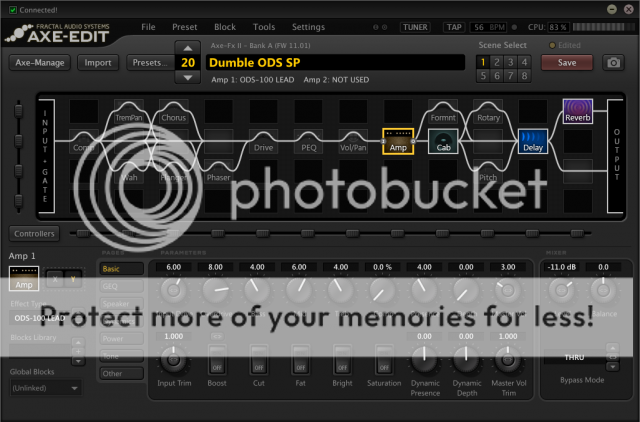LVC
Fractal Fanatic
Hi LVC,
Did a little search and came up with what appears to be a "technical" explanation as well as a another audio clip, where in the post they refer to the Phenomenon as "Swirl". Perhaps Cliff could validate the explanation as it seems to be a characteristic of the amp design and not a players skillset.
Just trying to help, don't know if its factual as its over my head :encouragement:
Greg
Telecaster Guitar Forum - View Single Post - Note-flipping
This is way over my head as well.
"..."The Phenomenon is known as Swirl
Described as a dynamically-changing, slightly "phasey" sound as a note or chord decays, which is common to some tube amps. Typically, "swirl" is caused by a midrange "dip" or varying duty-cycle change in a clipped square wave that changes position as the note decays, giving a sort of mild phase shifter effect.
What happens is that first the phase inverter or output stage clips and produces a flat square wave. As the note decays, the signal level decreases, and the midrange frequencies start getting "unclipped" (either by the fact that their frequency band level is lower, or by phase cancellations due to the unequal phase shift with respect to frequency caused by tone controls and other RC phase shifts that occur in a gain stage) and show up as a "dip" in the top of the square wave, which will move back and forth along the top as the fundamental and other harmonics shift the operating point. Even if the clipping ratio isn't extreme enough to show the "dip" on the scope, the duty-cycle of the square wave will usually be dynamically changing as well.
Since the preamp stages are all AC-coupled to each other, the operating point shifts as the signal gets smaller, due to slight "blocking" distortion, where the gain stage clamps the top peak to a point slightly above it's cathode voltage, while allowing the wave to still increase in the negative direction. As the signal decays, it shifts upward and changes the duty-cycle of the clipping. It is this ever-changing shifting of the operating point that causes the "swirl" effect. The trick to good "swirl" is in the correct staging of the gain and frequency breakpoints of each gain stage in the amp, particularly in the phase inverter and output stage.
A similar effect can be caused by too much drive from the phase inverter to the output tubes. As the note decays, a riding "buzz" can be heard coming in and out. This is crossover distortion aggravated by too much signal swing to the output tube grids. Reducing the signal levels at the output of the phase inverter will cure this.
Another cause of a "swirly" sound is a parasitic oscillation that is riding on the output signal, causing intermodulation distortion. "



